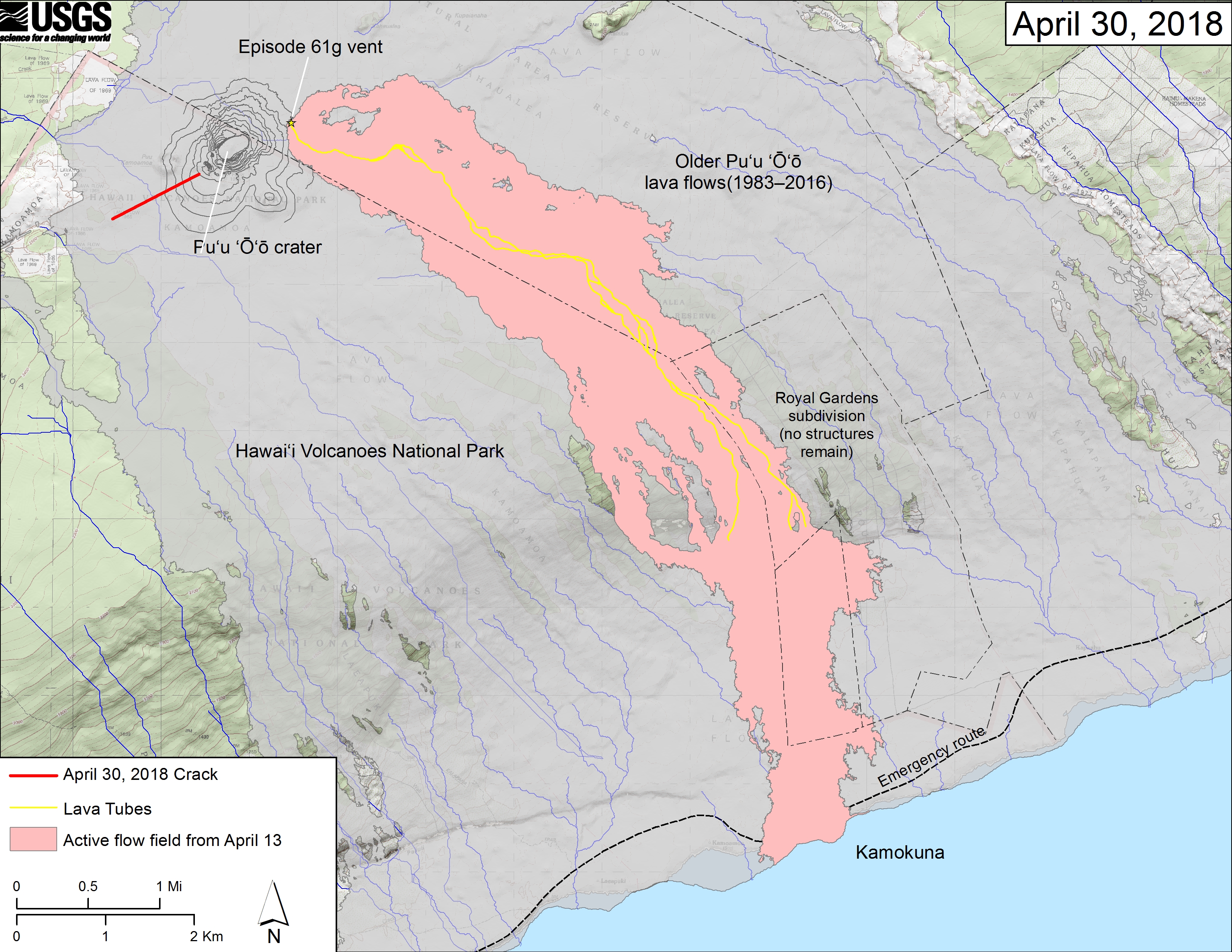Possibility of volcanic eruptions grows in Hawaii with increased low magnitude earthquake activity
May 3rd, 2018Hawaii County Civil Defense Agency
“This is a Civil Defense message for Wednesday May 2, 2018 at 6:00 PM.
The Hawaiian Volcanoes Observatory reports continuous low magnitude earthquake activity along the east rift zone in lower Puna which includes Leilani Estates, Nanawale Estates, to the coastal area of Kapoho.
Due to this activity Hawaiian Volcanoes Observatory indicates an eruption is possible. Because it is not possible to predict where an eruption could occur, the areas that could be affected are Nanawale Estates, Leilani Estates or Kapoho.
Due to the possibility of an eruption, the following are issued:
Prepare and review your emergency plans in case you need to evacuate.
Stay informed by listening to local radio stations for Civil Defense updates or call Civil Defense at 935-0031.
Hawaiian Volcanoes Observatories and your Hawaii County Civil Defense will continue to monitor the situation. You will be informed of any conditions that affect your safety.
This is your Hawai’i County Civil Defense Agency.”
May 2, 2018

Starting on the afternoon of Monday, April 30, 2018, magma beneath Pu‘u ‘Ō‘ō drained and triggered the collapse of the crater floor. Within hours, earthquakes began migrating east of Pu‘u ‘Ō‘ō, signaling an intrusion of magma along the middle and lower East Rift Zone. As of about noon on Wednesday, May 2, these earthquakes continue along the lower East Rift Zone, with many reports of earthquakes felt by residents in nearby subdivisions. The orange dashed line marks the approximate area within which most of the earthquakes are located based on automatic earthquake locations and analysis by seismologists. All earthquake locations are preliminary. For more details on the hazards associated with this ongoing event, see this link: https://volcanoes.usgs.gov/volcanoes/kilauea/status.html (see large map)
May 1, 2018
This map shows recent changes to Kīlauea’s East Rift Zone lava flow field and Pu‘u ‘Ō‘ō cone. The 61g flow field, as of April 13, 2018, is shown in pink. The crack that formed on the west side of Pu‘u ‘Ō‘ō on April 30th, 2018, during or immediately after the crater floor collapse is shown as a solid red line. Older Pu‘u ‘Ō‘ō lava flows (1983–2016) are shown in gray. The yellow line is the trace of the active lava tubes. The Kamokuna ocean entry is inactive. The blue lines over the Pu‘u ‘Ō‘ō flow field are steepest-descent paths calculated from a 2013 digital elevation model (DEM), while the blue lines on the rest of the map are steepest-descent paths calculated from a 1983 DEM (for calculation details, see http://pubs.usgs.gov/of/2007/1264/). Steepest-descent path analysis is based on the assumption that the DEM perfectly represents the earth’s surface. DEMs, however, are not perfect, so the blue lines on this map can be used to infer only approximate flow paths. The base map is a partly transparent 1:24,000-scale USGS digital topographic map draped over the 1983 10-m digital elevation model (DEM). (see large map) (see large map) (see large map) (see large map)


